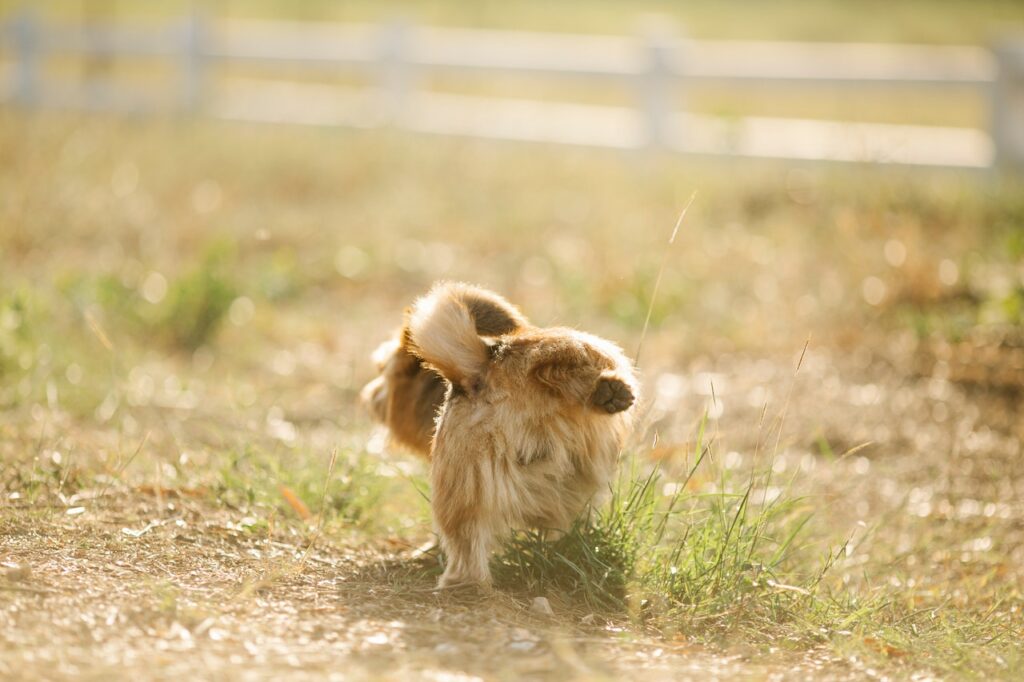If you’re a proud dog owner, you likely revel in the joys of companionship and endless tail-wagging. But as much as we adore our furry friends, their bathroom habits can be a source of frustration when it comes to our pristine lawns. Those pesky yellow patches left by dog urine are a common woe for dog-loving homeowners. However, don’t despair; there are solutions to this problem, and lawn care experts are here to offer their wisdom.

Understanding the Problem
To effectively combat dog urine spots, it’s crucial to first understand what’s causing them. Dog urine contains a high concentration of nitrogen, which, when concentrated in one area, can essentially “burn” the grass. This is what leads to those unsightly yellow or brown patches on your lawn. The issue becomes more pronounced if your dog repeatedly uses the same spot for their business.
Solutions from Lawn Care Specialists
Lawn care specialists, armed with their knowledge and experience, can be your saviors in this battle against dog urine spots. Let’s delve into their expert solutions:
1. Proper Lawn Maintenance
Lawn care specialists stress the importance of maintaining a healthy lawn. A lush, well-nourished lawn is more resilient to urine damage. Regular watering, mowing, and fertilizing are essential aspects of a proactive approach to lawn care.
2. Frequent Watering
One effective strategy is to dilute the nitrogen concentration in your dog’s urine by encouraging more frequent watering. After your dog has done its business, hose down the area or water it lightly to help prevent the urine from causing damage.
3. Dog-Friendly Landscaping
Consulting with a lawn care specialist about your landscaping design can help. They can help you create a dedicated area for your dog’s bathroom needs, such as gravel paths or special potty zones. This not only protects your lawn but also makes maintenance more manageable.
4. Amend the Soil
Lawn care experts can assess your soil’s pH levels and nutrient content to determine if any amendments are needed. Properly balanced soil can help your grass recover faster from urine damage.
5. Choose Resilient Grass Types
Certain grass varieties are more resilient to dog urine, such as fescue and ryegrass. Lawn care specialists can advise you on the best grass type for your region and your pet’s habits.
6. Consistent Lawn Aeration
Aerating your lawn allows for better water and nutrient penetration. Lawn care specialists recommend core aeration to loosen the soil and enhance its overall health, making it less susceptible to urine damage.
7. Dog Supplements
Some lawn care specialists might suggest dietary supplements for your dog. These supplements can modify the pH of your dog’s urine, making it less harmful to your lawn. Consult your veterinarian for advice on safe and effective supplements.
Preventative Measures for Dog Owners
While lawn care specialists offer invaluable help, there are proactive measures dog owners can take to minimize urine spots:
- Encourage frequent bathroom breaks: Take your dog out for shorter walks more often to reduce the concentration of urine in one area.
- Train your dog: Teach your furry friend to use a designated spot in the yard for their bathroom needs.
- Consult your vet: Discuss your concerns about urine damage with your veterinarian. They can provide insights and recommendations for your specific dog’s needs.
- Keep your dog hydrated: Diluted urine is less likely to cause damage, so ensure your dog has access to plenty of fresh water.
In the battle against dog urine spots, collaboration between homeowners and lawn care specialists is a winning strategy. With their guidance and your proactive efforts, you can bid farewell to those unsightly yellow patches, and continue to enjoy your beautiful, pet-friendly lawn.
Comments